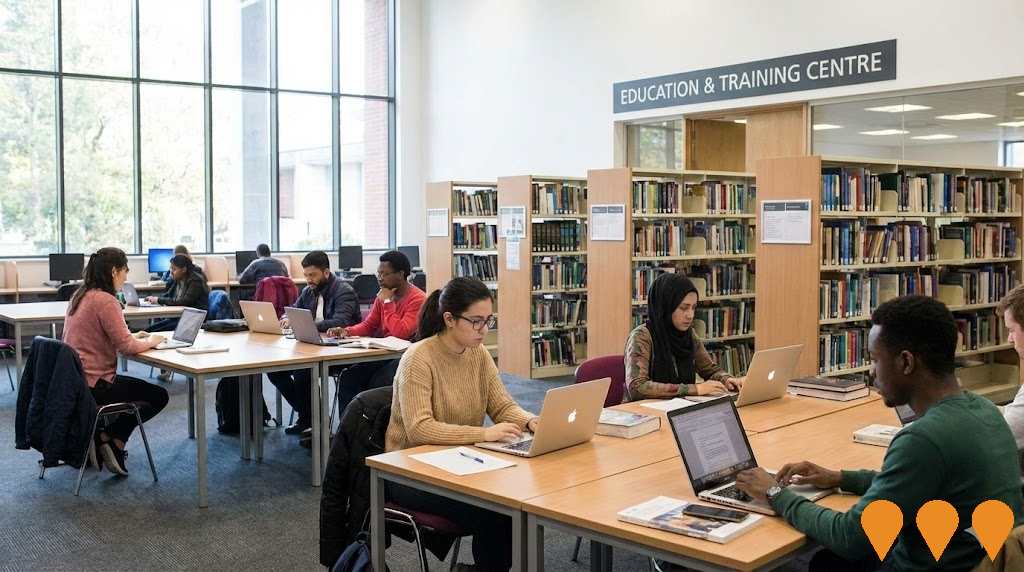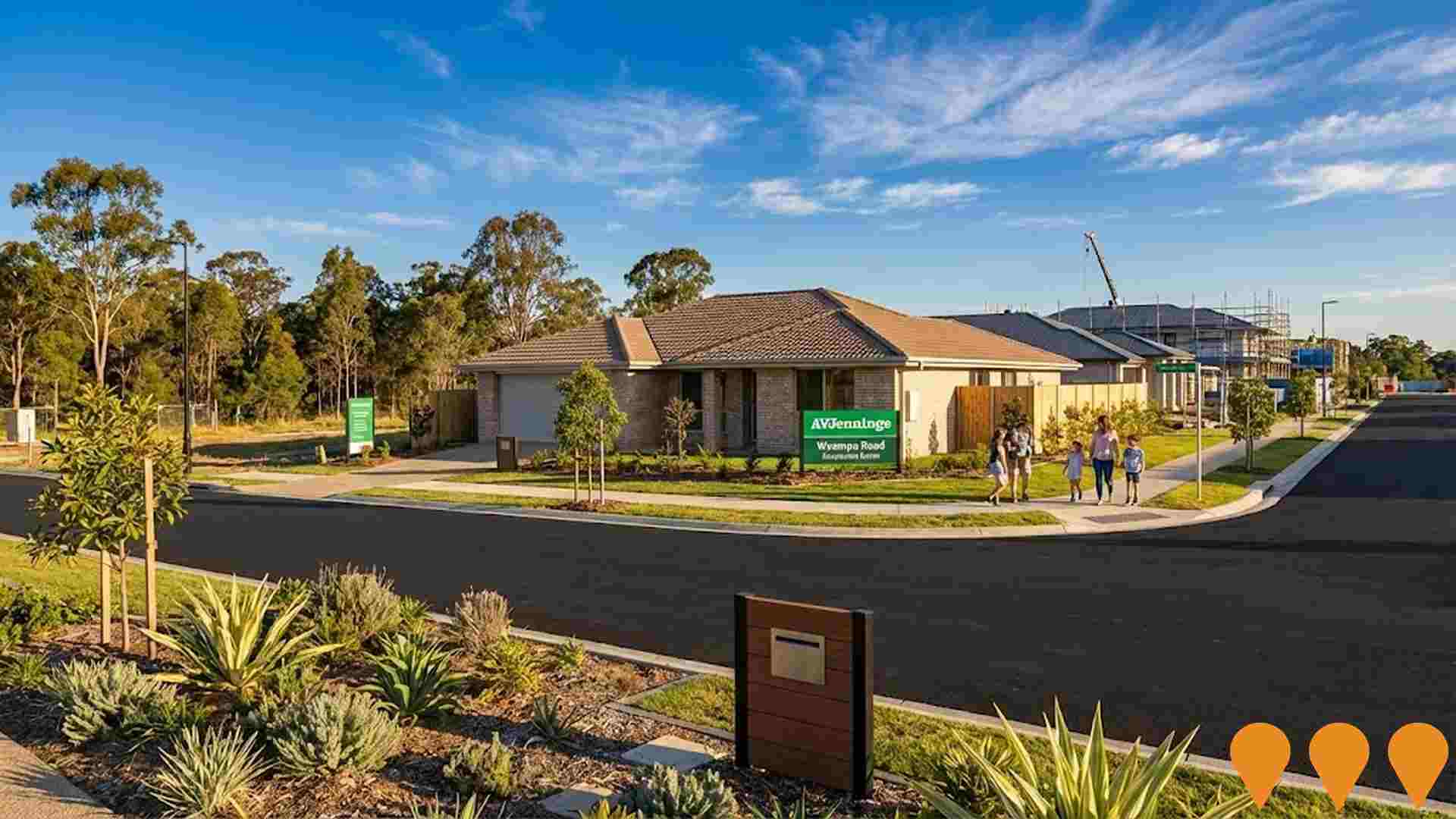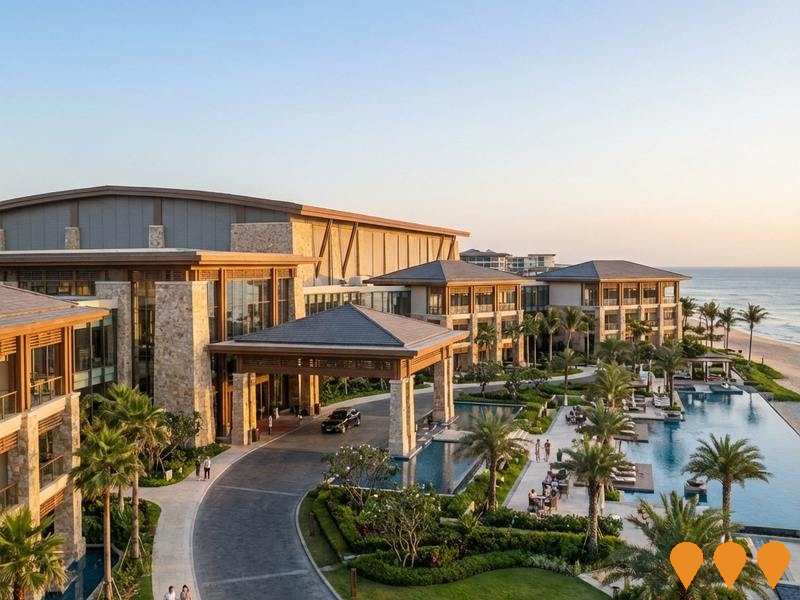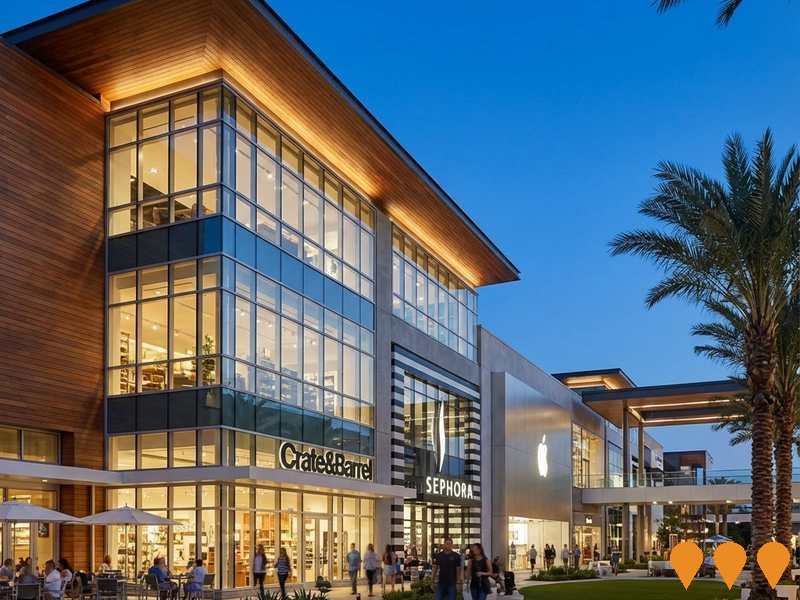Chart Color Schemes
est. as @ -- *
ABS ERP | -- people | --
2021 Census | -- people
Sales Activity
Curious about local property values? Filter the chart to assess the volume and appreciation (including resales) trends and regional comparisons, or scroll to the map below view this information at an individual property level.
Find a Recent Sale
Sales Detail
Population
Bald Hills has seen population growth performance typically on par with national averages when looking at short and medium term trends
Bald Hills' population was approximately 8,386 as of August 2025. This figure reflects a growth of 560 people since the 2021 Census, which recorded a population of 7,826. The increase is inferred from ABS data showing an estimated resident population of 8,367 in June 2024 and additional validated new addresses since the Census date. This results in a density ratio of 628 persons per square kilometer. Bald Hills' growth rate of 7.2% since the census is close to the SA4 region's 8.3%, indicating strong fundamentals. Natural growth contributed approximately 46.5% of overall population gains recently, with other factors such as overseas and interstate migration also positive.
AreaSearch uses ABS/Geoscience Australia projections for each SA2 area released in 2024 based on 2022 data. For areas not covered by this data or years post-2032, Queensland State Government's SA2 area projections from 2023 using 2021 data are adopted, with proportional growth weightings applied for age cohorts. Future population trends anticipate lower quartile growth, with Bald Hills expected to grow by 293 persons to 2041 based on the latest numbers, recording a total gain of 3.3% over these years.
Frequently Asked Questions - Population
Development
AreaSearch analysis of residential development drivers sees Bald Hills recording a relatively average level of approval activity when compared to local markets analysed countrywide
Bald Hills has averaged approximately 18 new dwelling approvals annually over the past five financial years, totalling 91 homes. In FY-26 so far, 2 approvals have been recorded. Each year, around 6.3 new residents arrive per dwelling constructed on average between FY-21 and FY-25. The demand significantly exceeds new supply, contributing to price growth and increased buyer competition.
New properties are constructed at an average expected cost of $330,000, which is below the regional average, suggesting more affordable housing options for buyers. This financial year has seen $6.6 million in commercial approvals, indicating Bald Hills' primarily residential nature. Compared to Greater Brisbane, Bald Hills has significantly less development activity, at 62.0% below the regional average per person. This constrained new construction typically reinforces demand and pricing for existing dwellings. Nationally, it reflects market maturity and possible development constraints.
The area's new development consists of 91.0% detached dwellings and 9.0% townhouses or apartments, preserving its low density nature and attracting space-seeking buyers with an estimated population of 590 people per dwelling approval. Future projections anticipate Bald Hills adding approximately 274 residents by 2041. At current development rates, new housing supply should comfortably meet demand, providing favourable conditions for buyers and potentially supporting growth beyond current population projections.
Frequently Asked Questions - Development
Infrastructure
Bald Hills has moderate levels of nearby infrastructure activity, ranking in the top 50% nationally
The performance of a region is significantly impacted by changes in local infrastructure, major projects, and planning initiatives. AreaSearch has identified 38 such projects that are likely to affect the area. Notable projects include the Linkfield Road Overpass Upgrade, Lacey Road Childcare Centre, 202 Lacey Road Townhouse Development, and Wyampa Road Residential Estate. The following list details those projects considered most relevant.
Professional plan users can use the search below to filter and access additional projects.
INFRASTRUCTURE SEARCH
 Denotes AI-based impression for illustrative purposes only, not to be taken as definitive under any circumstances. Please follow links and conduct other investigations from the project's source for actual imagery. Developers and project owners wishing us to use original imagery please Contact Us and we will do so.
Denotes AI-based impression for illustrative purposes only, not to be taken as definitive under any circumstances. Please follow links and conduct other investigations from the project's source for actual imagery. Developers and project owners wishing us to use original imagery please Contact Us and we will do so.
Frequently Asked Questions - Infrastructure
Brisbane Metro Northern Extension (Northern Metro)
Extension of the Brisbane Metro rapid bus transit system north from the Brisbane CBD to Carseldine (officially referred to as Northern Metro), delivering high-frequency, high-capacity fully electric metro services via dedicated infrastructure. The corridor includes new or extended stations at Lutwyche, Kedron, Chermside, Aspley and Carseldine, linking Moreton Bay communities to Brisbane employment centres ahead of the 2032 Olympic and Paralympic Games. A joint Brisbane City Council and Queensland Government project, supported by the Federal Government, currently in rapid business case phase with $50 million federal funding allocated for the business case.
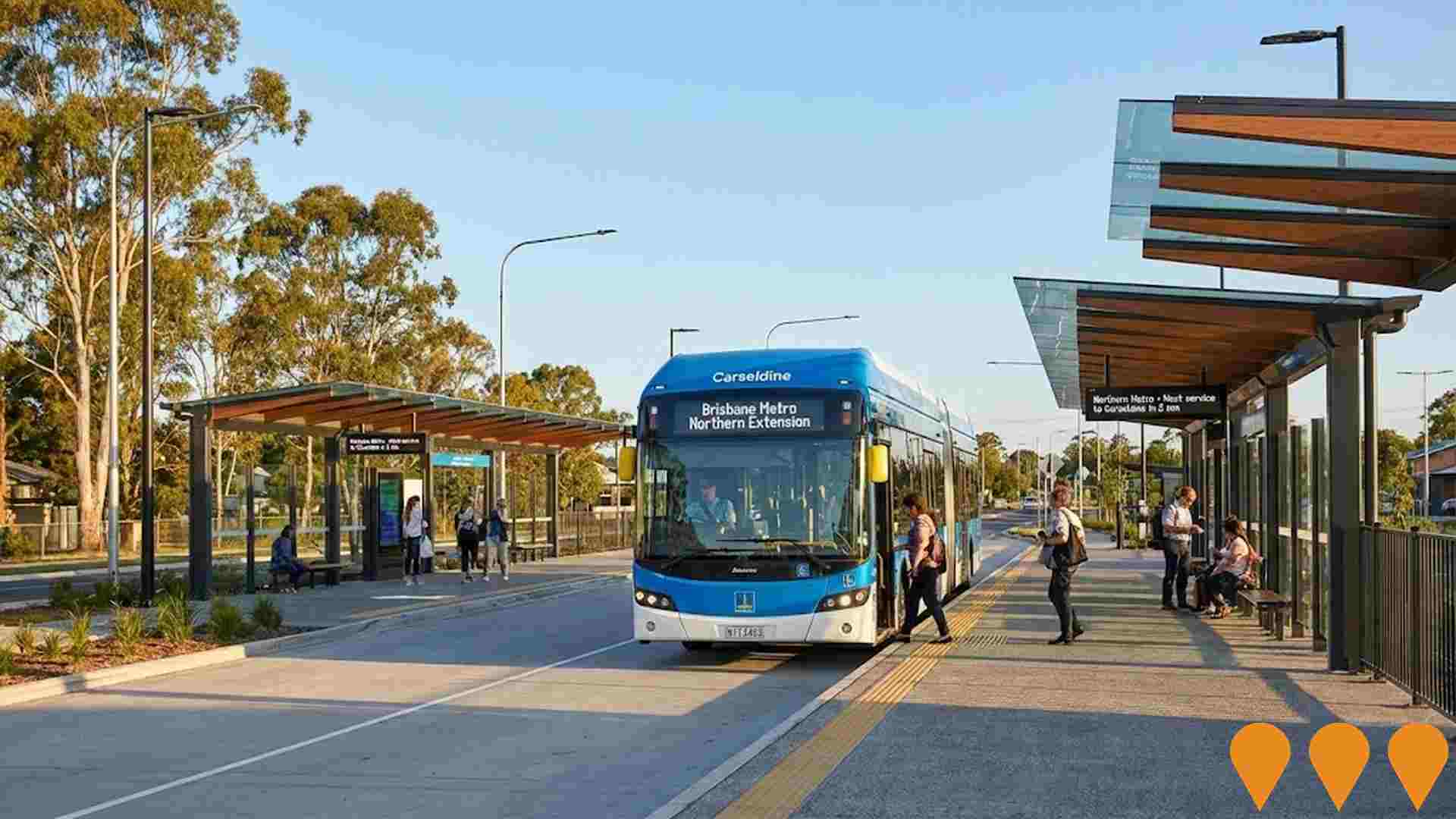
Innova Strathpine
Innova Strathpine is a landmark mixed-use development featuring 10,310 square meters of large-format retail space at the front and 15,640 square meters of premium strata warehouse space at the rear. The project is designed to provide modern, flexible industrial and commercial spaces for progressive businesses seeking quality, functionality, and design excellence. Building on the success of Innova Rochedale, this development sets new standards in the Innova portfolio with architecturally designed units, sustainable features, and strategic positioning on Gympie Road in Strathpine.
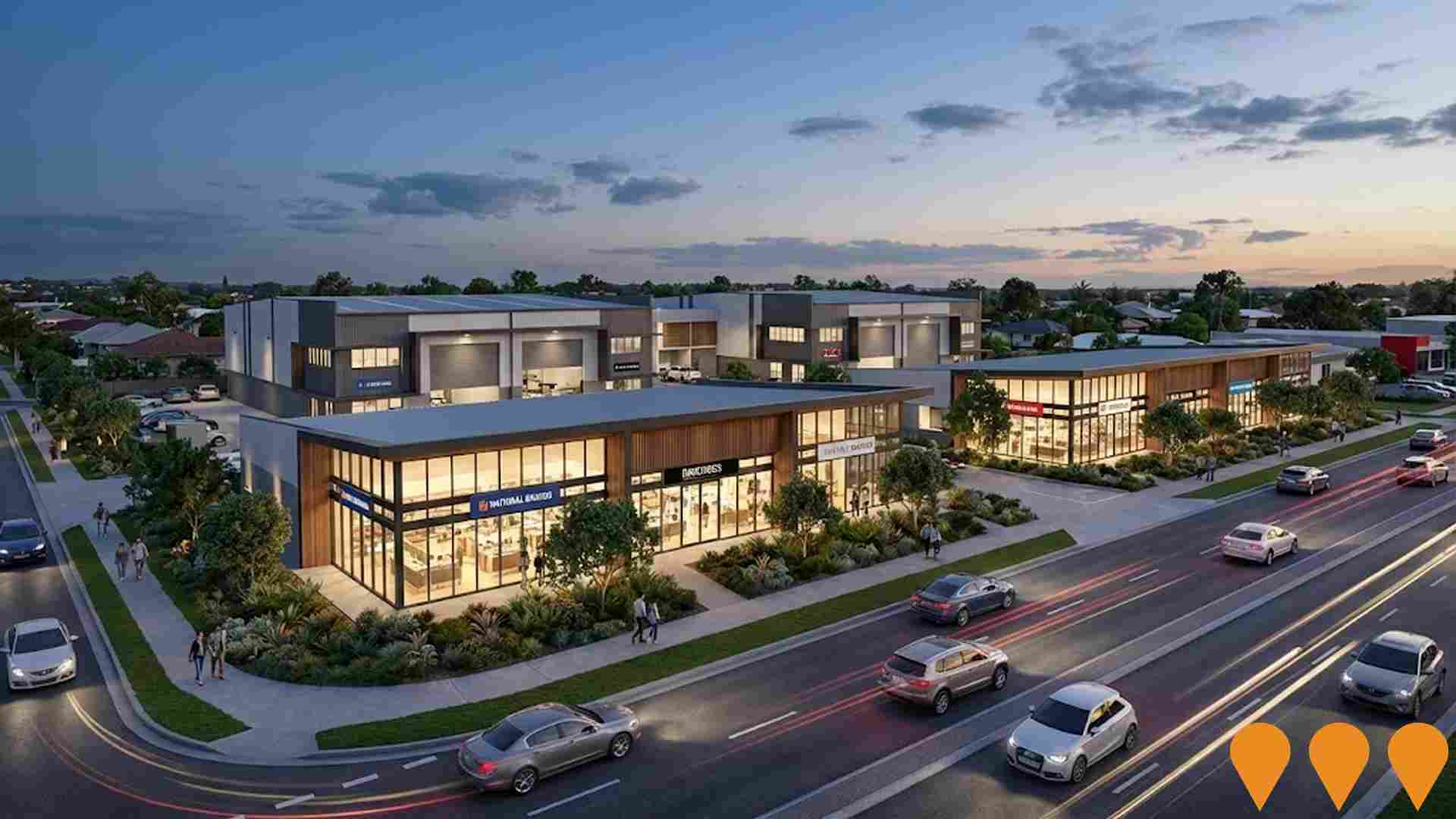
Brendale Data Supernode
A $2.5 billion green data storage facility and battery energy storage project on a 30-hectare site by Quinbrook Infrastructure Partners. Features advanced cloud computing infrastructure with up to 800MW power capacity, renewable energy systems, cutting-edge cooling technology, and 2,000MWh battery energy storage system. Expected to serve as a critical digital infrastructure hub for South East Queensland, connecting to international sub-sea cables via the Torus dark fibre network.
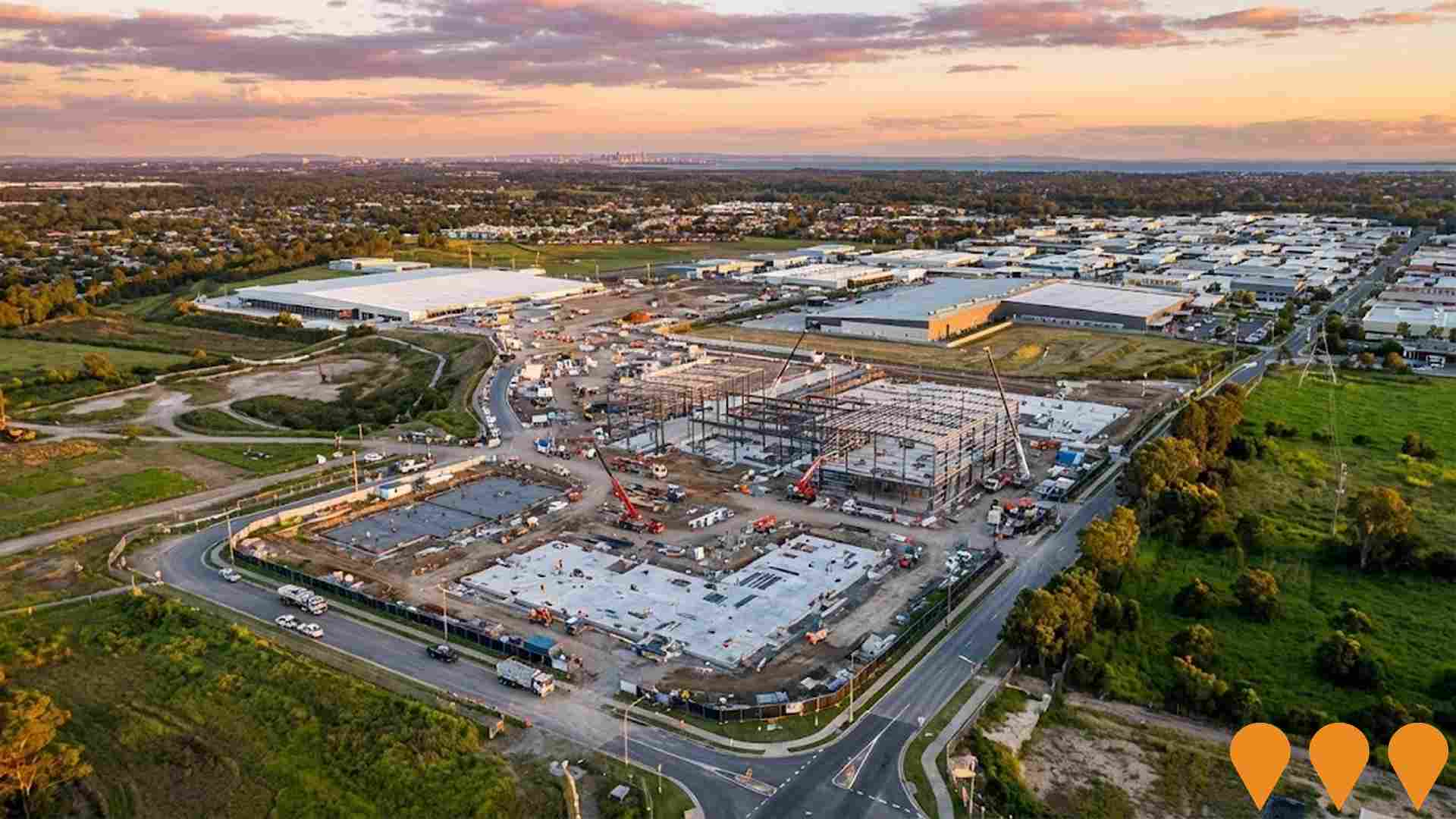
Bald Hills Central
A master-planned mixed-use precinct delivering approximately 450 apartments across multiple towers, integrated retail and commercial spaces, and significant public realm upgrades in the heart of Bald Hills. The project is understood to be proposed and the application is not yet readily available on the Brisbane City Council Development.i public register. The site address is associated with the Bald Hills Memorial Hall.
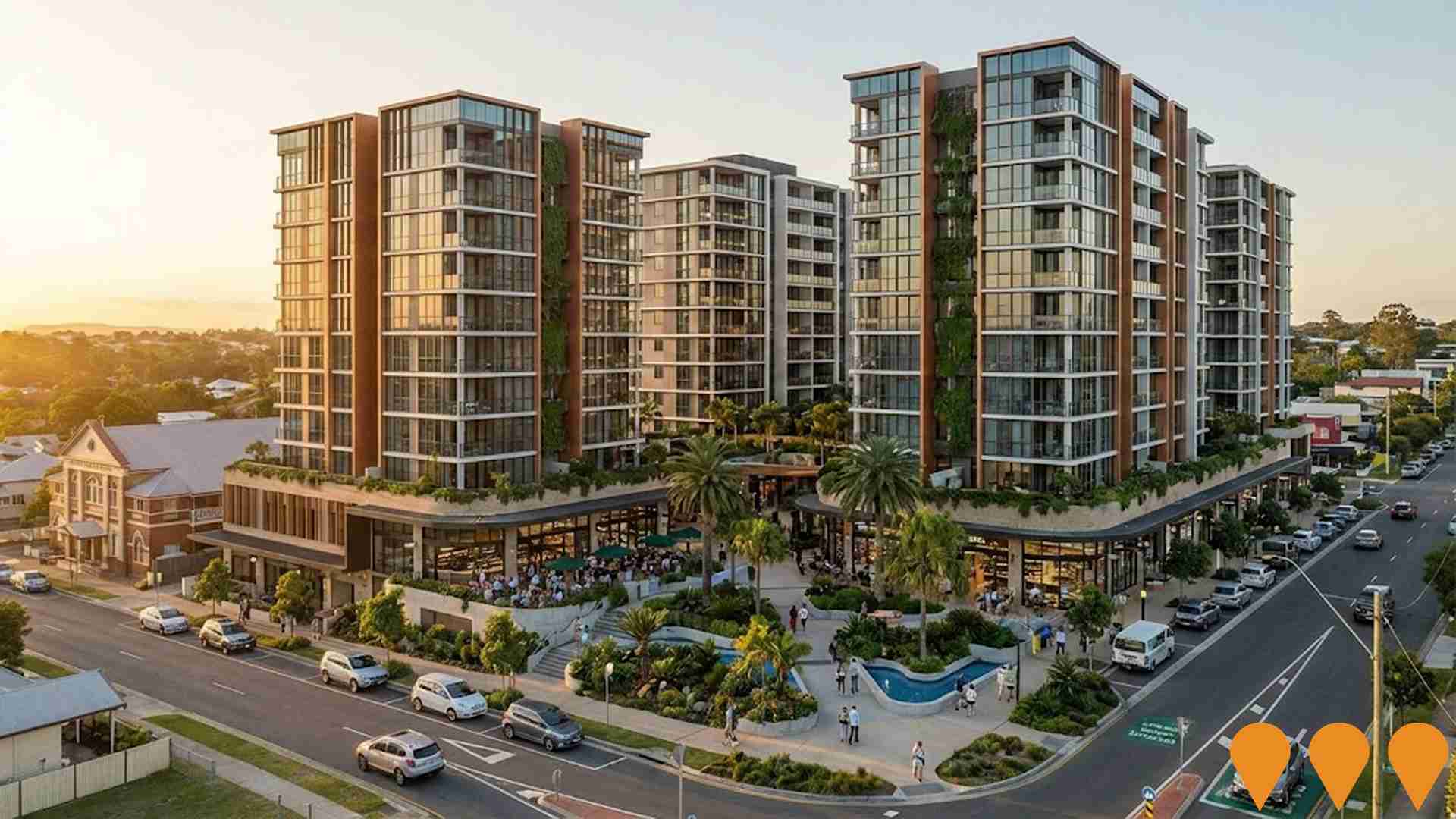
North West Transport Corridor
Integrated 9km transport corridor between Carseldine and Everton Park via Aspley area, preserved since the 1980s. $20 million business case study examining road, rail and active transport options to address growing congestion in northern Brisbane. Includes new arterial roads, public transport infrastructure, cycling and pedestrian paths. Various alignment options being considered including busway, rail, and tunnel solutions.
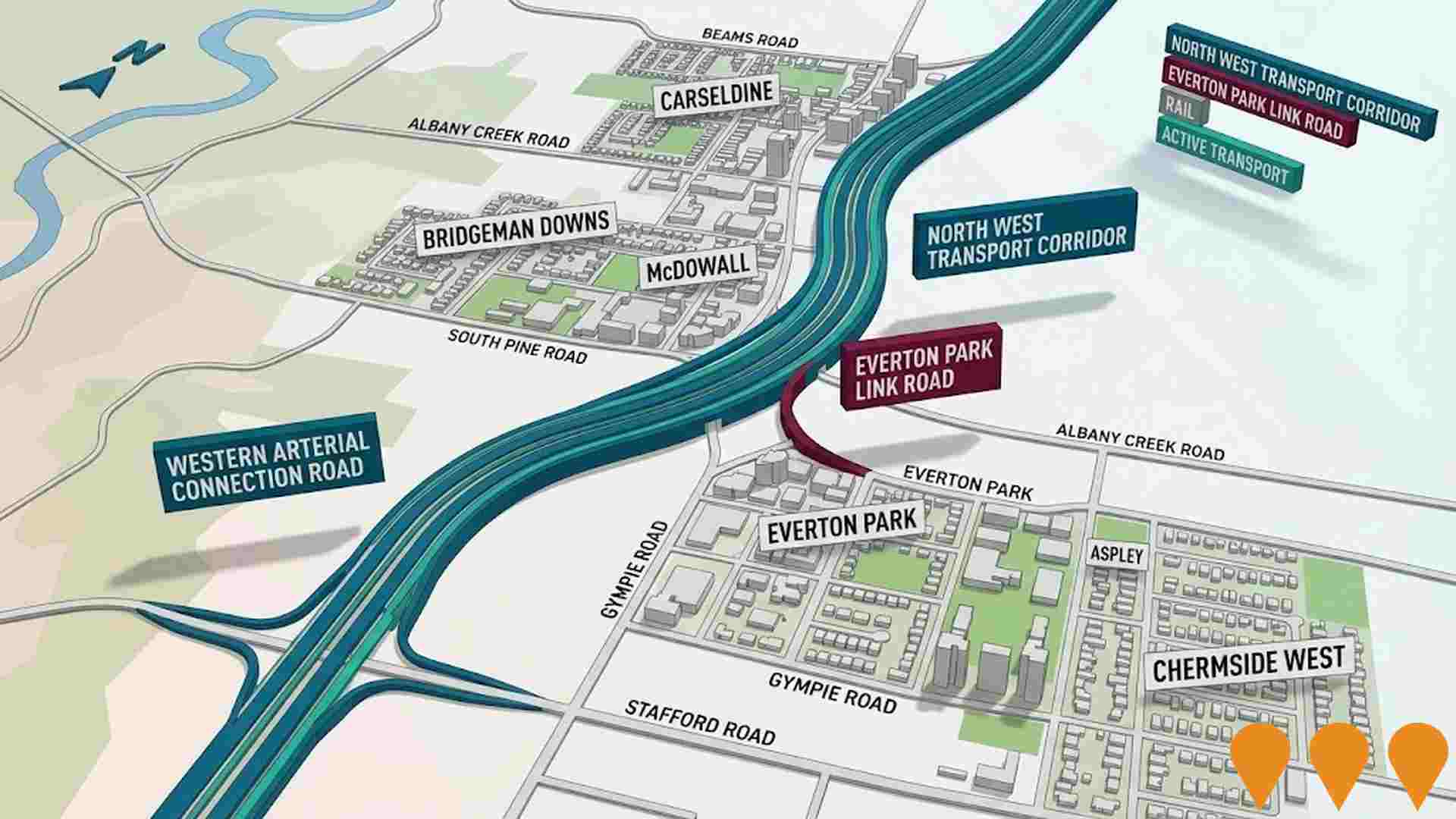
Linkfield Road Overpass Upgrade
Major $176 million upgrade of Linkfield Road Overpass at Bald Hills, increasing clearance height from 4.7m to 6m and upgrading to four lanes between Gympie Road and Lacey Road intersections. Includes new separated pathway for pedestrians and cyclists, plus on-road cycle lane. Part of Federal Government's $10 billion Bruce Highway investment.
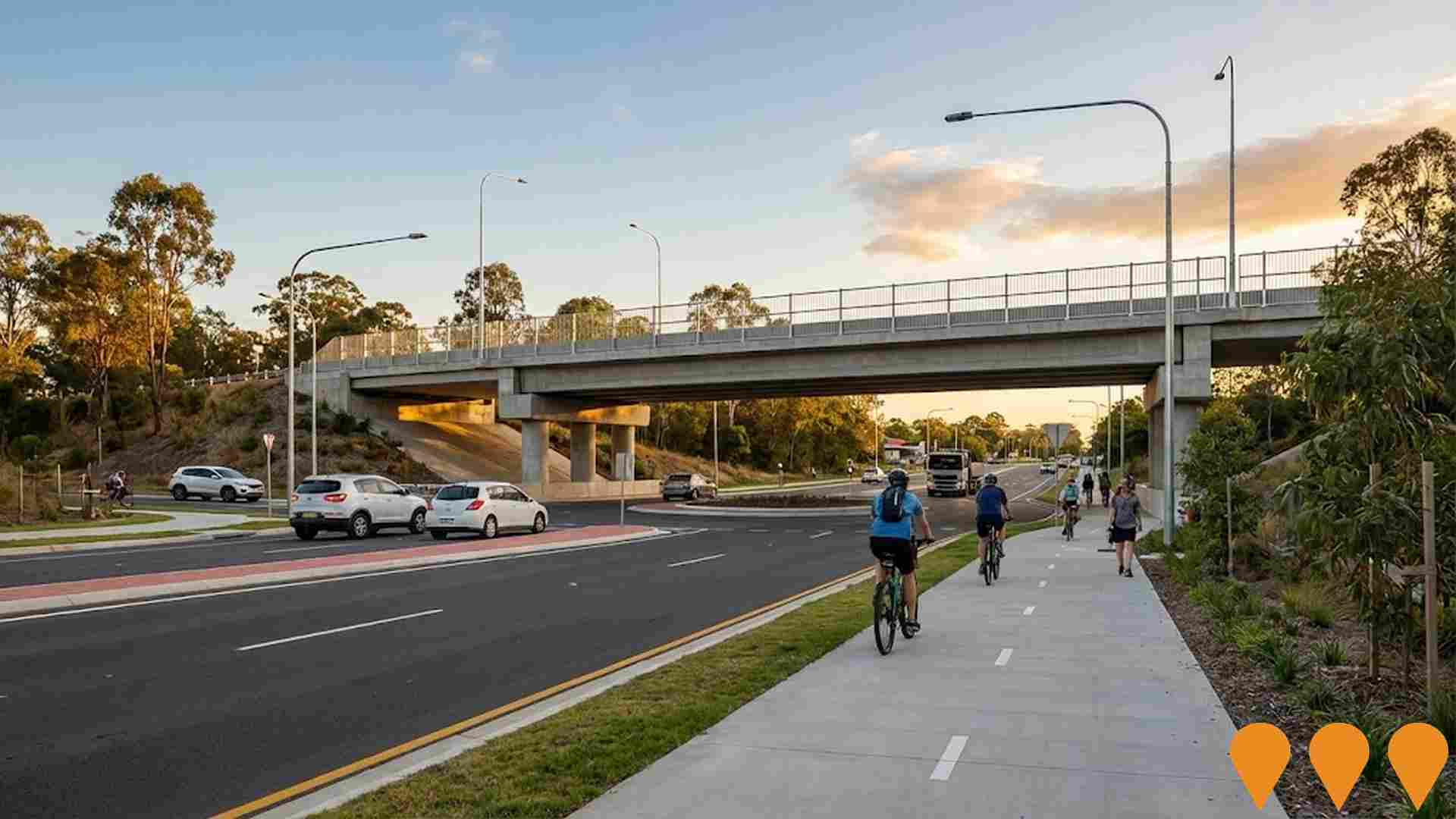
Bald Hills Station Precinct Renewal
Moreton Bay City Council-led transit-oriented development and urban renewal project centered on Bald Hills Railway Station. The currently active component is the Queensland Government-funded Bald Hills train station park 'n' ride upgrade, which includes 90 additional car spaces, improved station access, and a new kiss 'n' ride area.
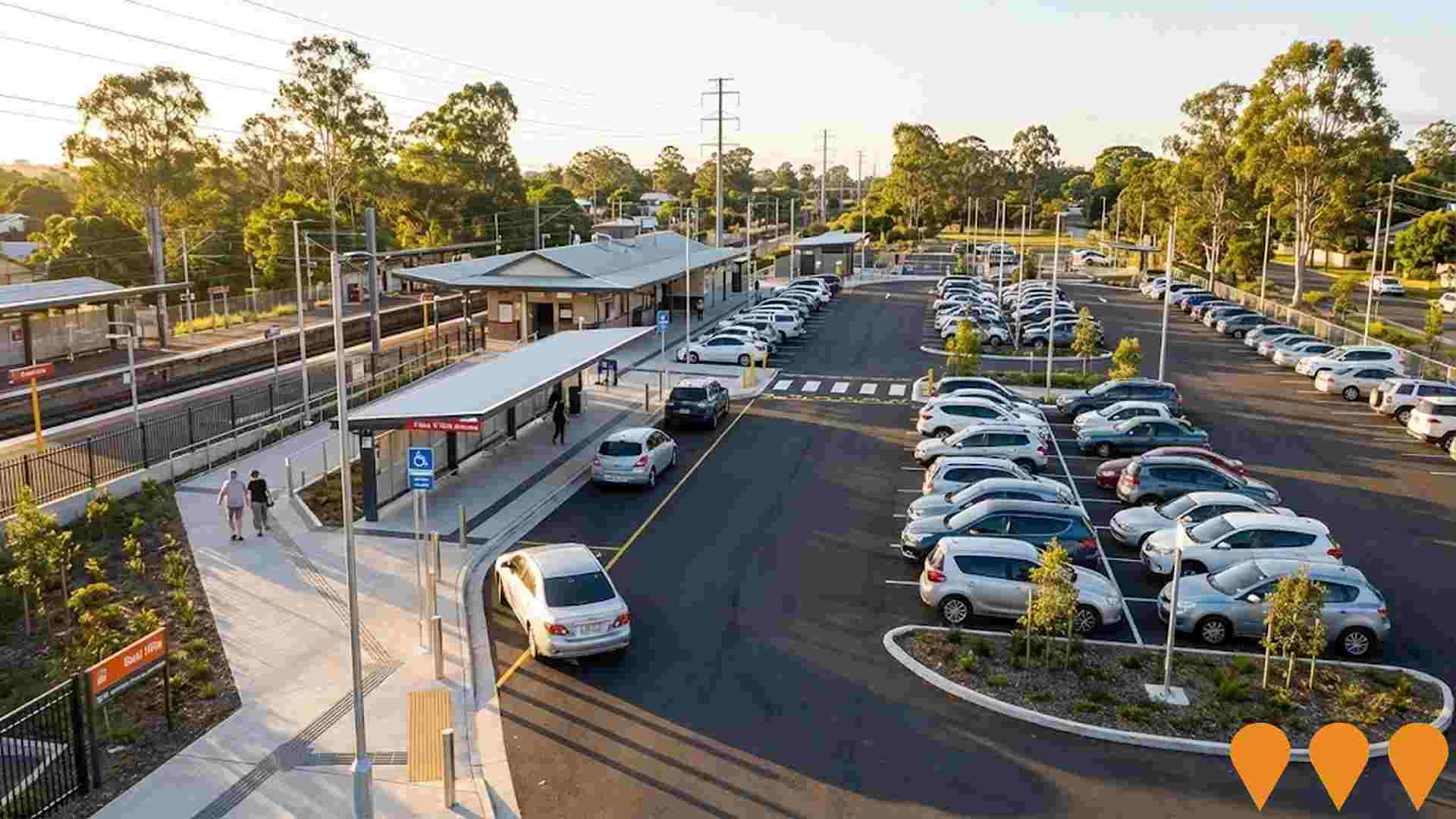
Gateway Motorway, Bracken Ridge to Pine River Upgrade
Upgrade of the Gateway Motorway between Bracken Ridge and the Pine River interchange to improve capacity, safety and network reliability. This section is being packaged and delivered with the Bruce Highway (Gateway Motorway to Dohles Rocks Road, Stage 1) as the Gateway to Bruce Upgrade (G2BU). TMR indicates procurement for a design-and-construct contractor is underway, with design activities preceding a construction start targeted from 2026.
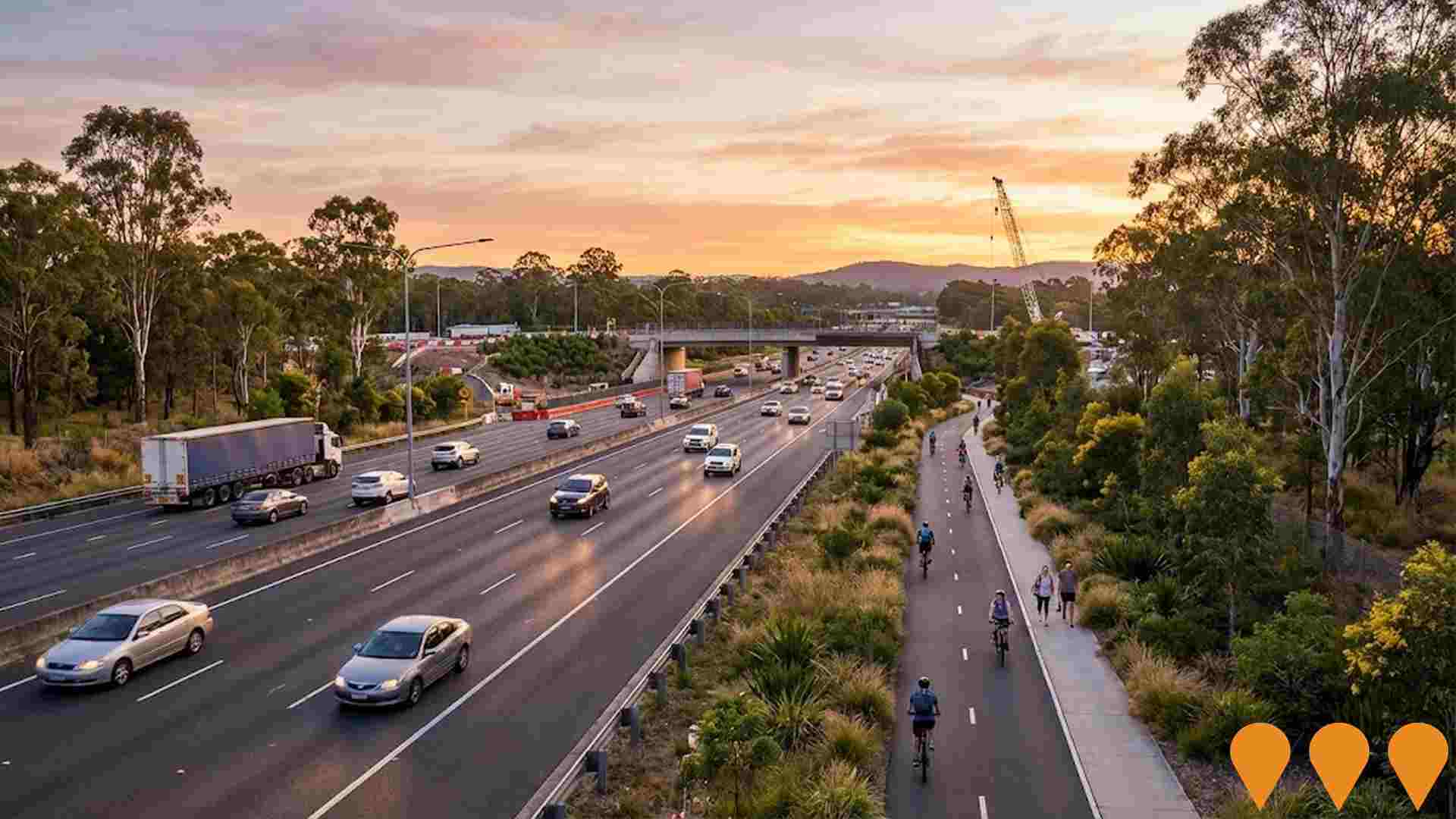
Employment
Employment conditions in Bald Hills remain below the national average according to AreaSearch analysis
Bald Hills has a skilled workforce with essential services sectors well represented. The unemployment rate in the area was 6.0% as of June 2025.
Employment growth over the past year was estimated at 11.1%. As of this date, there were 4,656 residents employed while the unemployment rate was 1.9% higher than Greater Brisbane's rate of 4.1%. Workforce participation in Bald Hills was fairly standard at 67.5%, compared to Greater Brisbane's 64.5%.
Leading employment industries among residents comprised health care & social assistance, construction, and retail trade. However, professional & technical services had a limited presence with 7.4% employment compared to the regional average of 8.9%. The area appeared to offer limited local employment opportunities based on the count of Census working population versus resident population. Between June 2024 and June 2025, employment increased by 11.1% alongside a labour force increase of 10.6%, causing the unemployment rate to fall by 0.5 percentage points. In contrast, Greater Brisbane saw employment rise by 4.4%, the labour force grow by 4.0%, and unemployment fall by 0.4 percentage points during the same period. Jobs and Skills Australia's national employment forecasts from May 2025 offer insight into potential future demand within Bald Hills. These projections suggest national employment will expand by 6.6% over five years and 13.7% over ten years, with growth rates differing significantly between industry sectors. Applying these industry-specific projections to Bald Hills' employment mix suggests local growth of approximately 6.6% over five years and 13.7% over ten years. However, it's important to note that this is a simple weighting extrapolation for illustrative purposes and does not take into account localised population projections.
Frequently Asked Questions - Employment
Income
Income analysis reveals strong economic positioning, with the area outperforming 60% of locations assessed nationally by AreaSearch
Bald Hills' income level is lower than average nationally according to latest ATO data aggregated by AreaSearch for financial year 2022. Bald Hills' median income among taxpayers is $54,810 and the average income stands at $61,675, compared to Greater Brisbane's figures of $55,645 and $70,520 respectively. Based on Wage Price Index growth of 13.99% since financial year 2022, current estimates would be approximately $62,478 (median) and $70,303 (average) as of September 2025. Census data reveals household, family and personal incomes in Bald Hills cluster around the 65th percentile nationally. The earnings profile shows 40.2% of the population (3,371 individuals) fall within the $1,500 - 2,999 income range, mirroring the region where 33.3% occupy this bracket. After housing, 85.4% of income remains for other expenses and the area's SEIFA income ranking places it in the 5th decile.
Frequently Asked Questions - Income
Housing
Bald Hills is characterized by a predominantly suburban housing profile, with ownership patterns similar to the broader region
In Bald Hills, as per the latest Census evaluation, 94.5% of dwellings were houses, with the remaining 5.4% being semi-detached apartments or other types. This contrasts with Brisbane metro's figures of 77.8% houses and 22.1% other dwellings. Home ownership in Bald Hills stood at 26.4%, with mortgaged dwellings at 48.1% and rented ones at 25.5%. The median monthly mortgage repayment was $1,750, lower than Brisbane metro's $2,000, while the median weekly rent was $390 compared to Brisbane metro's $430. Nationally, Bald Hills' mortgage repayments were below the Australian average of $1,863, with rents exceeding the national figure of $375.
Frequently Asked Questions - Housing
Household Composition
Bald Hills features high concentrations of family households, with a higher-than-average median household size
Family households constitute 79.8% of all households, including 38.6% couples with children, 26.9% couples without children, and 13.0% single parent families. Non-family households comprise the remaining 20.2%, with lone person households at 16.9% and group households comprising 3.1%. The median household size is 2.8 people, larger than the Greater Brisbane average of 2.7.
Frequently Asked Questions - Households
Local Schools & Education
The educational profile of Bald Hills exceeds national averages, with above-average qualification levels and academic performance metrics
The area's university qualification rate is 23.6%, substantially lower than the SA3 area average of 35.3%. Bachelor degrees are most common at 17.2%, followed by postgraduate qualifications (4.3%) and graduate diplomas (2.1%). Vocational credentials are prominent, with 37.7% of residents aged 15+ holding them - advanced diplomas at 11.3% and certificates at 26.4%. Educational participation is high, with 28.9% of residents currently enrolled in formal education: 11.0% in primary, 7.8% in secondary, and 4.2% in tertiary education.
Bald Hills State School and St Paul's School serve a total of 1,863 students. The area has above-average socio-educational conditions (ICSEA: 1090) and functions as an education hub with 22.2 school places per 100 residents, significantly higher than the regional average of 11.5. This attracts students from surrounding communities.
Frequently Asked Questions - Education
Schools Detail
Nearby Services & Amenities
Transport
Transport servicing is good compared to other areas nationally based on assessment of service frequency, route connectivity and accessibility
Bald Hills has 35 operational public transport stops, offering a mix of train and bus services. These stops are served by 29 distinct routes, collectively facilitating 1,671 weekly passenger trips. Transport accessibility is deemed good, with residents typically situated 277 meters from the nearest stop.
Service frequency averages 238 trips daily across all routes, translating to approximately 47 weekly trips per individual stop.
Frequently Asked Questions - Transport
Transport Stops Detail
Health
Health outcomes in Bald Hills are marginally below the national average with the level of common health conditions among the general population somewhat typical, though higher than the nation's average among older cohorts
Bald Hills has below-average health outcomes compared to national averages. Common health conditions are somewhat typical but higher among older residents.
Private health cover is relatively low at approximately 51%, covering about 4,243 people, compared to Greater Brisbane's 56.2%. Mental health issues and asthma are the most common conditions, affecting 9.5% and 8.7% of residents respectively. Around 67.5% of residents report no medical ailments, compared to 70.5% in Greater Brisbane. The area has 14.8% of residents aged 65 and over (1,245 people), lower than Greater Brisbane's 16.6%. Health outcomes among seniors require more attention than the broader population.
Frequently Asked Questions - Health
Cultural Diversity
Bald Hills was found to be more culturally diverse than the vast majority of local markets in Australia, upon assessment of a range of language and cultural background related metrics
Bald Hills had a higher cultural diversity compared to most local markets, with 25.5% of its population born overseas and 16.6% speaking a language other than English at home. Christianity was the predominant religion in Bald Hills, accounting for 49.1% of its people. Hinduism showed an overrepresentation in Bald Hills, comprising 4.4%, compared to 4.5% across Greater Brisbane.
The top three ancestry groups were English (25.9%), Australian (25.5%), and Other (8.8%). Notable differences existed in the representation of certain ethnic groups: Samoan was overrepresented at 0.9% (vs regional 0.5%), Filipino at 2.7% (vs 1.6%), and New Zealand at 1.0% (vs 0.9%).
Frequently Asked Questions - Diversity
Age
Bald Hills's population is slightly younger than the national pattern
Bald Hills' median age is 36 years, equal to Greater Brisbane's but younger than the national average of 38. The 35-44 age group makes up 16.1% of Bald Hills' population, higher than Greater Brisbane's percentage. The 25-34 cohort, however, constitutes only 13.1%. Between 2021 and present, the 15 to 24 age group grew from 11.2% to 12.9%, while the 75 to 84 cohort increased from 4.1% to 5.3%. Conversely, the 25 to 34 cohort declined from 15.0% to 13.1%, and the 5 to 14 group decreased from 14.5% to 13.3%. By 2041, population forecasts suggest significant demographic shifts in Bald Hills. The 85+ age cohort is projected to grow by 220 people (151%), from 145 to 366. Notably, the combined 65+ age groups will account for 59% of total population growth, reflecting the area's aging demographic profile. In contrast, both 0 to 4 and 5 to 14 age groups are expected to decrease in number.
